
Flash Comics is a comics anthology published by All-American Publications and later by National Periodical Publications. The title had 104 issues published from January 1940 to February 1949. Despite the title, the anthology featured the adventures of multiple superheroes in addition to Jay Garrick, the original Flash. Characters introduced in the series include the Flash, Hawkman, Hawkgirl and Black Canary.

Scorchy Smith is an American adventure comic strip created by artist John Terry that ran from March 17, 1930 to December 30, 1961.
A daily strip is a newspaper comic strip format, appearing on weekdays, Monday through Saturday, as contrasted with a Sunday strip, which typically only appears on Sundays. They typically are smaller, 3–4 grids compared to the full page Sunday strip and are black and white.

Harry Hershfield was an American cartoonist, humor writer and radio personality. He was known as "the Jewish Will Rogers". Hershfield also was a columnist for the New York Daily Mirror. His books include Laugh Louder, Live Longer and Now I'll Tell One. As a comics artist he is best remembered for his newspaper comic Abie the Agent.

The Adventures of Smilin' Jack is an aviation comic strip that first appeared October 1, 1933, in the Chicago Tribune and ended April 1, 1973.

Bronc Peeler was a Western adventure cowboy comic strip created by Fred Harman in 1933, and ran until July 2, 1938. Harman is best known as the artist for the Red Ryder comic strip, which he created with Stephen Slesinger.

Little Jimmy, originally titled Jimmy, is a newspaper comic strip created by Jimmy Swinnerton. With a publication history from February 14, 1904, to April 27, 1958, it was one of the first continuing features and one of the longest running.
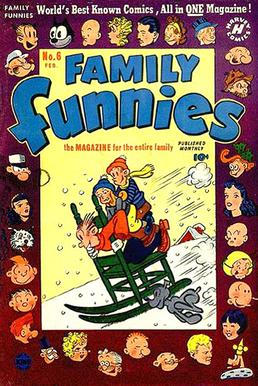
Toots and Casper is a family comic strip by Jimmy Murphy, distributed to newspapers for 38 years by King Features Syndicate, from December 17, 1918 to December 30, 1956. The strip spawned many merchandising tie-ins, including books, dolls, paper dolls, pins, bisque nodders and comic books.

The Bungle Family is an American gag-a-day comic strip, created by Harry J. Tuthill, that first appeared in 1918. Originally titled Home, Sweet Home, it first appeared as part of a series of rotating strips in the New York Evening Mail. The strip ran until June 2, 1945.
Abie the Agent is an American comic strip about a Jewish car salesman by Harry Hershfield. It debuted in 1914.
This is a timeline of significant events in comics in the 1900s.
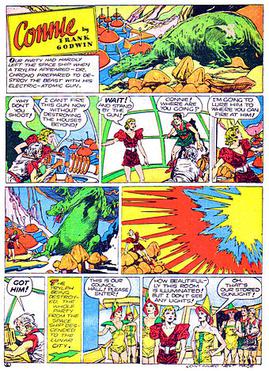
Connie is an American adventure comic strip created by the cartoonist Frank Godwin, who introduced a book illustration style to the comics page. The strip ran from 1927 to 1941 for the Ledger Syndicate. Connie debuted as a Sunday page on November 13, 1927. The strip was syndicated in France as Cora in the weekly paper Le Journal de Mickey.

Bruce Gentry was an aviation adventure comic strip by Ray Bailey, distributed by the Post-Hall Syndicate. It debuted March 25, 1945, and by July the strip had expanded to 35 newspapers.
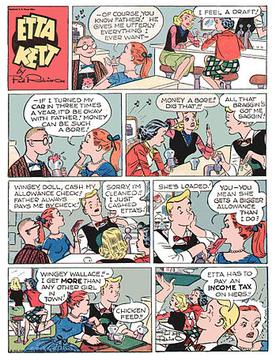
Etta Kett is a long-running comic strip created by Paul Robinson, which ran from December 7, 1925 to November 9, 1974.
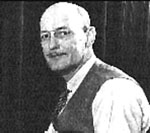
Harold Hering Knerr was an American comic strip creator, who signed his work H. H. Knerr. He was the writer-artist of the comic strip The Katzenjammer Kids for 35 years.

Kenneth Fredrick Ernst was a US comic book and comic strip artist. He is most notable for his work on the popular and long-running comic strip Mary Worth from 1942 to 1985. With his realistic style, uncommon in those early years, Ernst paved the way for soap opera strips that followed.
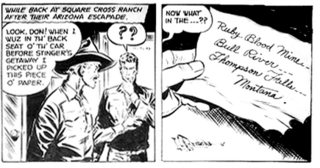
Don Winslow of the Navy was an American comic strip created by Frank Victor Martinek and distributed mostly by the Bell Syndicate from 1934 to 1955. The title character was a spy-chasing lieutenant commander in Naval intelligence. The comic strip led to a radio adventure serial that began in 1937, as well as film serials that began in 1942. Original comic book stories also appeared in Fawcett Comics titles starting in 1943.
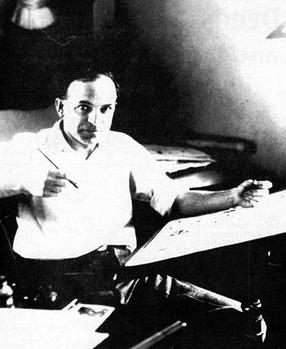
Charles William Kahles was a prolific German-born American cartoonist responsible for numerous comic strips, notably Hairbreadth Harry. He is credited as the pioneer of daily comic strip continuity with his Clarence the Cop, which he drew for the New York World in 1900–09, introducing to newspapers the innovation of continuing a comic strip story in a day-to-day serial format.
Morty Meekle is an American syndicated newspaper comic strip that was published between 1956 and 1966, created and produced by cartoonist Dick Cavalli. The series featured the title character dealing with office and dating situations, and, like Fritzi Ritz, which became Nancy after sixteen years, evolved to focus on the younger characters from Cavalli's strip, and was renamed Morty Meekle and Winthrop and then just Winthrop on February 27, 1966.
The New York World was one of the first newspapers to publish comic strips, starting around 1890, and contributed greatly to the development of the American comic strip. Notable strips that originated with the World included Richard F. Outcault's Hogan's Alley, Rudolph Dirks' The Captain and the Kids, Denys Wortman's Everyday Movies, Fritzi Ritz, Gus Mager's Hawkshaw the Detective, Victor Forsythe's Joe Jinks, and Robert Moore Brinkerhoff's Little Mary Mixup.















